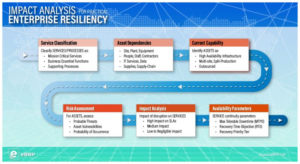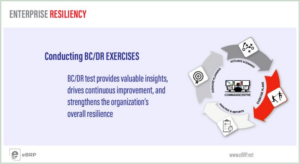Organizations in which emergencies, crisis and disruptions are, if not common, frequent, are likely to have an Emergency Management department, team or group. Public Utilities, Energy, Transportation (especially aviation) and Government agencies, among others, are all likely to maintain Emergency Management functions.
Emergency Management (EM) and Business Continuity Management (BCM) have principles in common. You might even say that EM and BCM are related. But even a novice BCM practitioner with a modicum of understanding of EM would acknowledge that the two disciplines are ‘cousins’ – but not twins.
In some organizations, unfortunately, EM and BCM just don’t get along. One thinks the other worthless; the latter find the former rigid, narrow-minded or overbearing. Sounds just like some sibling rivalries I’ve known.
Sometimes that rivalry takes the form of a power struggle. A client in a state government Department once asked for advice on how to respond to the state’s Emergency Management Coordinator who informed them that “You (Business Continuity) people have to stop using Incident Management, Crisis Management and Crisis Communication in your program: those terms belong to us.” They were also told that their plans were “a waste of time; when a disaster happens we (Emergency Management) will tell you what to do.” That may have been an extreme case but, it’s not entirely uncommon that Emergency Managers and Business continuity Managers don’t understand one another’s roles.
In its highest and simplest form, EM is intended to protect the lives and safety of individuals – and to protect those endangered from further harm. BCM is intended to restore, continue or recover business operations that are vital to meeting the organization’s operating objectives. There is no reason those two processes shouldn’t be able to work together – providing they understand each other’s objectives, and acknowledge each other’s mission.
The role of an Emergency Manager Team isn’t to tell a business process owner what to do (that should be contained in their BC Plan); their job – in protecting lives and assets – is to help them understand what they can’t do (i.e., can’t enter the building, can’t stay here, can’t move that vehicle, etc.). The role of the Business Continuity Response Team is to stem the loss of business – without endangering people, or getting in the way (that’s why BCM has multiple strategies: to fit multiple circumstances).
In the case of my Government client, they explained to the Emergency Manager that – because their ‘business’ was ensuring the health and safety of citizens at the margins (endangered children, the physically and mentally handicapped and those reliant on state-provided healthcare) their Business Continuity plans were also aimed at ensuring the safety of citizens; failure to carry out their day-to-day responsibilities could endanger the lives of those citizens. That got the EM Team’s attention, and made future cooperation much smoother. (I’m not certain they ever resolved the terminology issues.)
Business Continuity Management does not usually include Emergency Management. Managing a building evacuation scheme is not Emergency Management. BC Responders are not “first responders” unless they’ve been trained and certified. Neither is an EM Team tasked with keeping the business running. The first objective of both Teams should be the keeping their people safe. But the more both Teams understand each other’s mission, the easier it will be to cooperate and collaborate.



